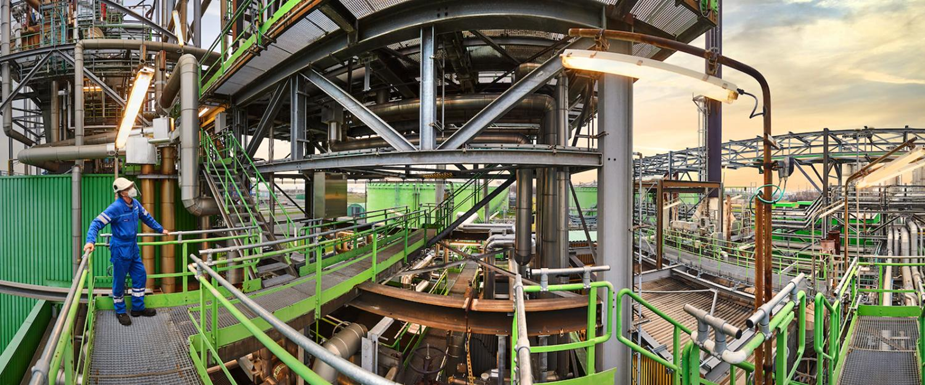
Hydrogen will be an important link in the energy transition. It offers many possibilities for moving towards a climate neutral society. One of these possibilities is the gradual replacement in the coming decades of natural gas by hydrogen, which will eventually be green hydrogen produced from renewable energies via an electrolysis process.
This will gradually reduce CO₂ emissions from current industrial processes that use natural gas. For the first time in Belgium, ENGIE will test the use of hydrogen in a cogeneration unit at the INEOS Phenol site in Antwerp.
• Pilot project aiming at the gradual replacement of natural gas by hydrogen
• First test in a cogeneration unit on an active industrial site
• The objective of this test is to demonstrate the potential for converting existing installations and of hydrogen on an industrial scale
The objective of the pilot project led by ENGIE and INEOS Phenol is to inject hydrogen into the natural gas supply of a gas turbine. First, 10% hydrogen will be injected. This volume can then be increased to 20%. This is the first time that such a test has been carried out on an industrial scale in Belgium. The cogeneration plant at the INEOS Phenol site in Doel, one of the first to be built in Belgium, is ideal for performing this type of test.
ENGIE is responsible for the design, installation and operation of the cogeneration unit. INEOS Phenol has experience in using hydrogen as a raw material in its production processes and also has the necessary authorizations to supervise the project. The existing cogeneration plant ensures that the hydrogen used produces not only electricity, but also heat, and that the overall energy efficiency is high enough.
Thanks to these trials on an industrial scale, ENGIE and INEOS Phenol intend to play a pioneering role in the energy transition of the chemical industry. This joint research project will provide both partners with valuable information and data on the use of hydrogen in industrial facilities, such as performance monitoring and measurement of emissions during combustion. This information may prove useful for the development of the next generation of burners.
ENGIE relies heavily on hydrogen, and is already developing several projects in Belgium, including the Power-to-Methanol project in the port of Antwerp in which ENGIE and INEOS are already partners in a consortium with other players. The aim is to produce green methanol by reusing captured CO₂ in combination with sustainably generated hydrogen. INOVYN, a branch of INEOS, will operate this demonstration plant at the Lillo site.
For INEOS Phenol also, this study represents a step forward in its strategy to reduce emissions. This initiative is part of the roadmap defined by INEOS at the end of last year.for its sites in Antwerp and which aims to become climate neutral by 2050 and reduce emissions by 55% by 2030 compared to 1990. The roadmap consists of a combination of measures such as reuse of hydrogen and CO₂, continued investment in electrification, switching to recycled or organic raw materials when possible, and the use of “green heat” and renewable energies. To this end, INEOS concluded two major contracts for the purchase of offshore wind power last year, including the largest Belgian industrial contract ever concluded with ENGIE.
The collaboration in this pilot project between INEOS Phenol and ENGIE is based both on a strong industrial partnership and on a common commitment to accelerate the transition to climate neutrality. In addition, the two partners go a step further by contributing, within a consortium bringing together industry and universities, to broader theoretical research on the use of hydrogen in the energy transition.
Cedric Osterrieth, CEO ENGIE Generation Europe :
ENGIE considers hydrogen to be a strong link towards a carbon neutral economy. We intend to play a pioneering role with these new trials on an industrial scale, both in terms of research and practical implementation. ENGIE can once again count on the expertise and support of INEOS, an important partner in the energy transition. This pilot project will allow us to better understand the use of hydrogen to reduce CO2 emissions and will bring us closer to a carbon neutral future. It is complementary to the projects that we are already carrying out everywhere in Belgium and within the framework of which we are developing hydrogen-based solutions for industrial and mobility applications, by relying on our expertise in the production of renewable energy,
Hans Casier, CEO INEOS Phenol :
This test is fully in line with INEOS ‘strategy to avoid CO2 emissions. This is an additional step for INEOS Phenol in Doel, where 20% of green vapor is already supplied by the connection to the Ecluse network. Today, INEOS already produces 300,000 tonnes of hydrogen per year as a “co-product” of chemical processes. This hydrogen is widely used as a low carbon fuel and as a raw material in our own production processes, which allows the use of less fossil raw materials. INEOS has recently launched a new business activity which focuses on the development of “clean hydrogen capacity”. For this, INEOS can rely on the expertise of INOVYN, which,
Read the most up to date Fuel Cell and Hydrogen Industry news at FuelCellsWorks




